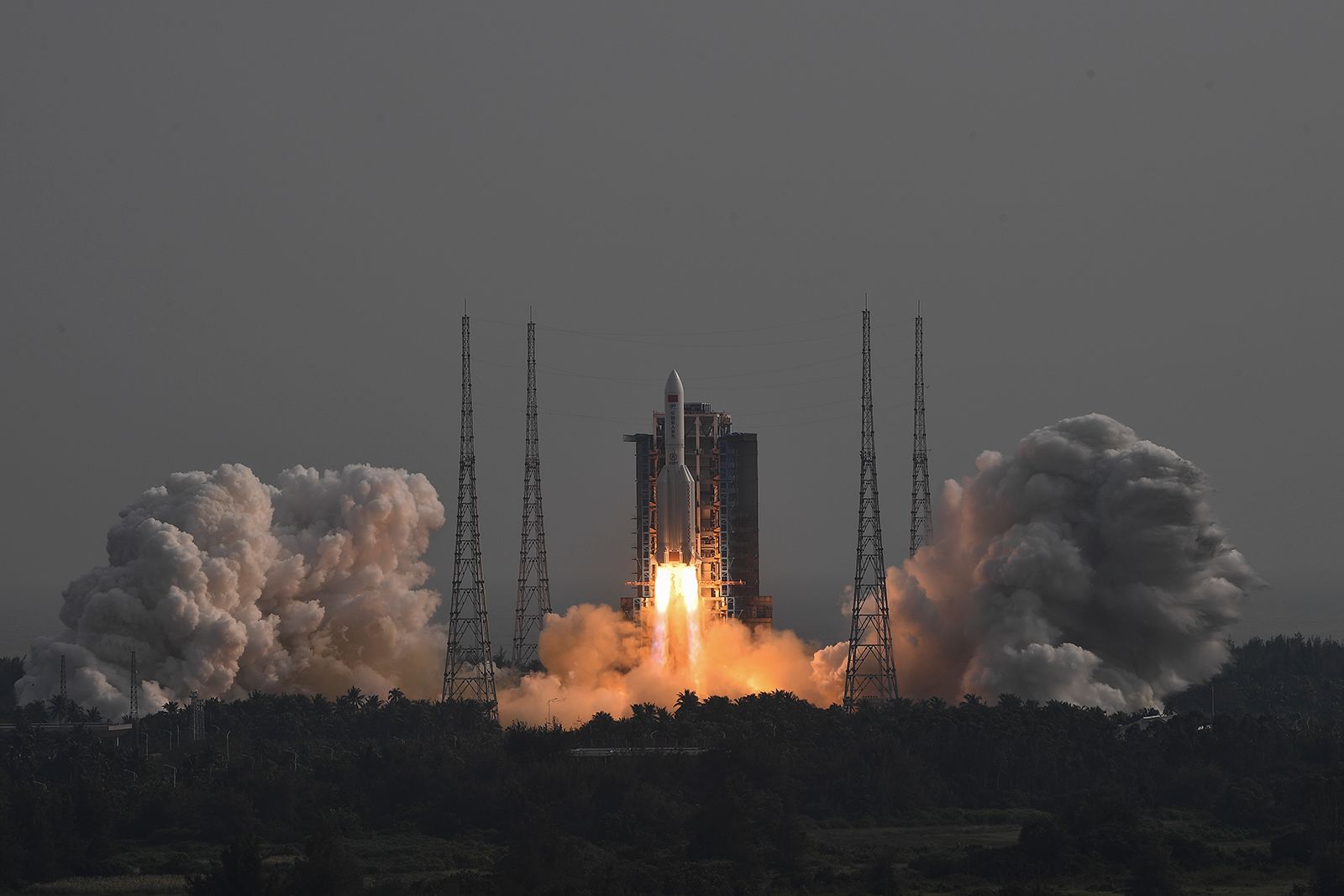The Aerospace Corporation predicts that debris from a large Chinese rocket will touch down on Earth on Saturday. Even though it will mostly burn up upon return, there is a minuscule chance that some of the pieces may cause harm or fatalities.
A little after 1:08 p.m. EDT, according to Aerospace Corporation’s prediction, the rocket will reenter the atmosphere. According to the corporation, “it is yet too early to estimate a substantial debris footprint,” the precise point of reentry remains unclear. A video has surfaced on the internet which shows the Chinese rocket booster debris falling to Earth over Malaysia.
The space community has seen the rocket, which China chose against guiding back through the atmosphere. It was a component of China’s most powerful rocket, the enormous Long March 5B-Y3 rocket, which launched the Wentian segment to the space station, where three astronauts are presently living.
Over 88% of the world’s population, according to experts at The Aerospace Corporation, resides within the probable debris footprint of reentry, therefore there is a non-zero risk that the remaining debris may fall in a populated region.
At least twice previously, China has let rocket segments fall down to the Earth on their own. Last year, when pieces of a Chinese rocket fell in the Indian Ocean, NASA criticized China for “failing to satisfy responsible criteria for their space debris.”
A Chinese supply spacecraft that was servicing the nation’s continuous orbiting space station earlier this week mostly burnt up upon reentering the Earth. According to the China Human Spaceflight Agency, just a few minor pieces of the Tianzhou-3 spacecraft managed to fall safely into a designated region of the South Pacific on Wednesday.
2018 saw an unplanned re-entry of China’s decommissioned space station Tiangong 1, which eventually crashed in the Pacific. 2020 saw the launch of a second Long March-5B rocket, which eventually touched down close to Africa’s west coast. While China’s defunct weather satellite was destroyed by a missile in 2007, a large debris field was left behind. Zhao Lijian, a spokesman for the foreign ministry, dismissed these worries.
Zhao said at a daily briefing on Wednesday that China has been thinking about how to reduce space debris and get rocket carriers and satellites back into the atmosphere since the beginning of the development stage of its space engineering program.
Zhao stated, “It is believed that this kind of rocket uses a particular technological design that will cause the majority of the components to burn up and be broken during the reentry phase. “There is very little chance of inflicting harm to aircraft operations or to the land.”
Re-entry disintegration of the shuttle Columbia in February 2003 was the most significant in a region where people live. There were no casualties despite a substantial quantity of debris hitting the ground when a 200,000-pound spaceship fragmented above Texas. Similar debris dropped over Western Australia during Skylab’s re-entry in 1978, however, there were no recorded casualties.
Source: CBS News

